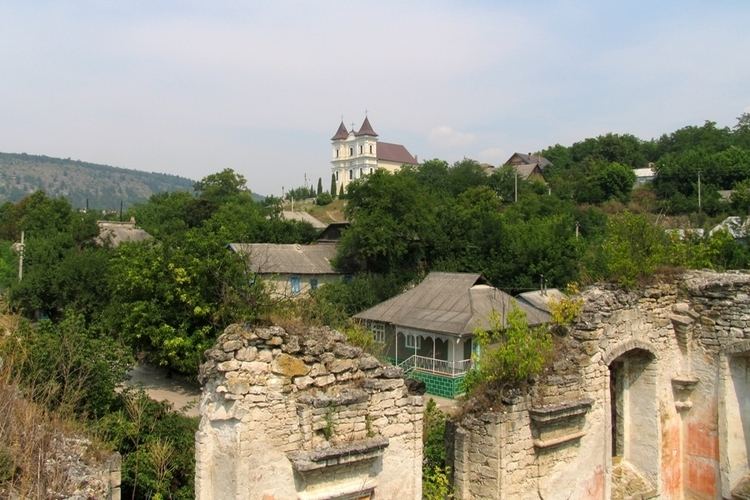Founded 1402 | Local time Saturday 4:58 PM | |
 | ||
Weather 11°C, Wind NW at 16 km/h, 37% Humidity | ||
Raşcov (Romanian; alternative names Râşcov, Raşcu; in Ukrainian: Рашків, Rashkiv, Russian: Рашково, Rashkovo, Polish Raszków) is one of the oldest communes of Transnistria. It is located in the northern part, between Rîbniţa and Camenca. It is composed of two villages, Iantarnoe (Янтарне, Янтарное) and Raşcov.
Map of Rascov, Moldova
It was founded in 1402 as a trading post on the Dniester river. The name means a species of mushroom, Lactarius deliciosus, in Romanian. During Middle Ages, the village was one of seven major fairs for the Dniester-Southern Bug area (the others being Mohuliv, Dubăsari, Silibria, Yampil, Yaruga, and Vasilcău). It was also the place of residence of the Rabbi Jacob Joseph of Polonne, a leading Jewish Hasidic zaddik, after his exile from Sharogrod.
Raşcov and the surrounding area is home to numerous historic monuments and architecture, among them the Polish Catholic church Sacred Kaatan, considered a historical heritage. It has recently undergone extensive renovation. The church was built when this part of Transnistria was a part of the Crown of the Polish Kingdom, with generous contributions by the Moldavian prince Petru Rareş.
Outside Raşcov is located the Rascov National Park, an extensive natural landscape preserve, and an ecologically protected area.
More recently the Transnistrian separatist authorities have edited an Atlas of Pridnestrovie, which refers to the area around Raşcov as the "Pridnestrovian Alps": Time, wind, and water have eroded the abrupt slopes near the village of Rashkov, having formed the limestone outliers, towering above the slopes.
